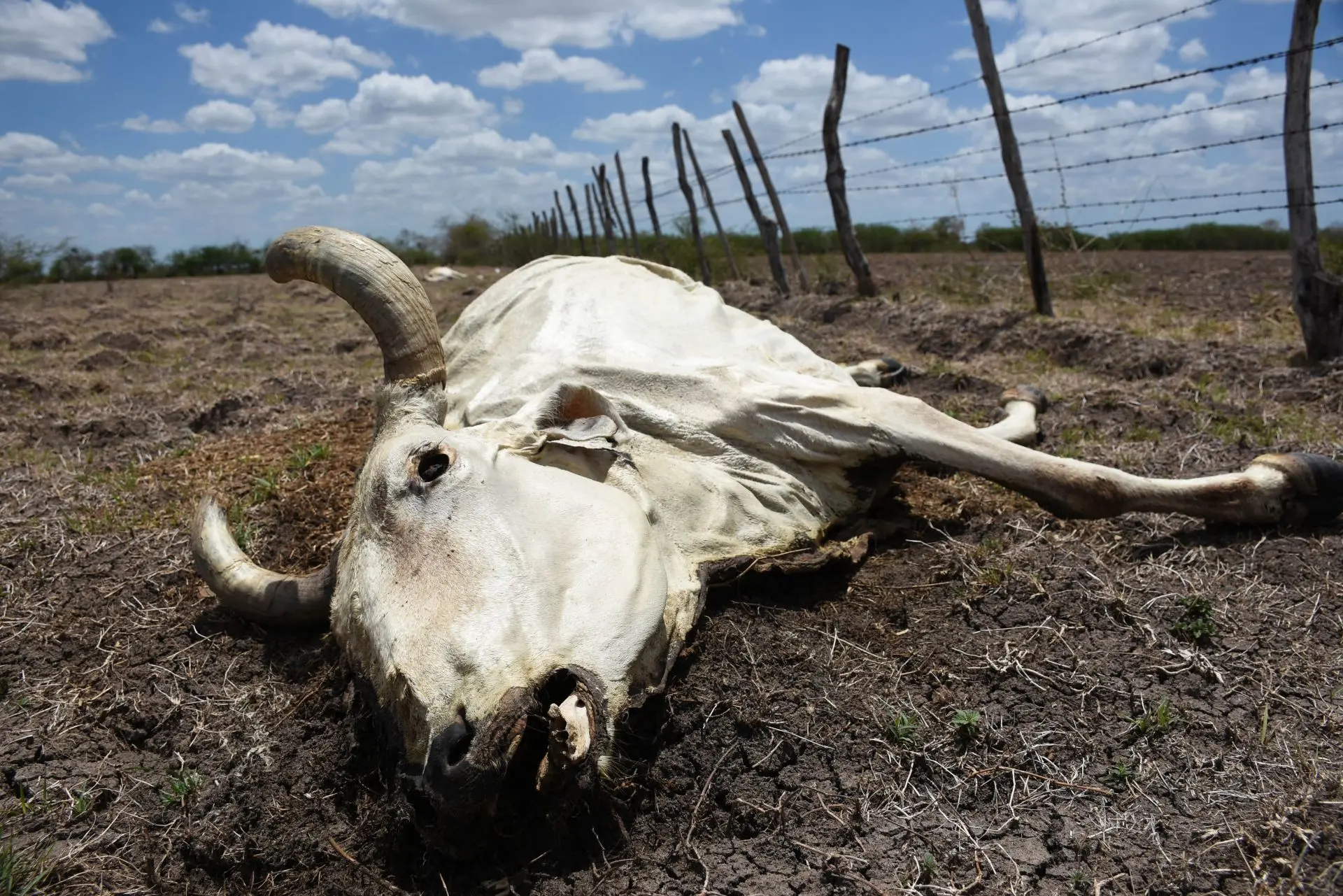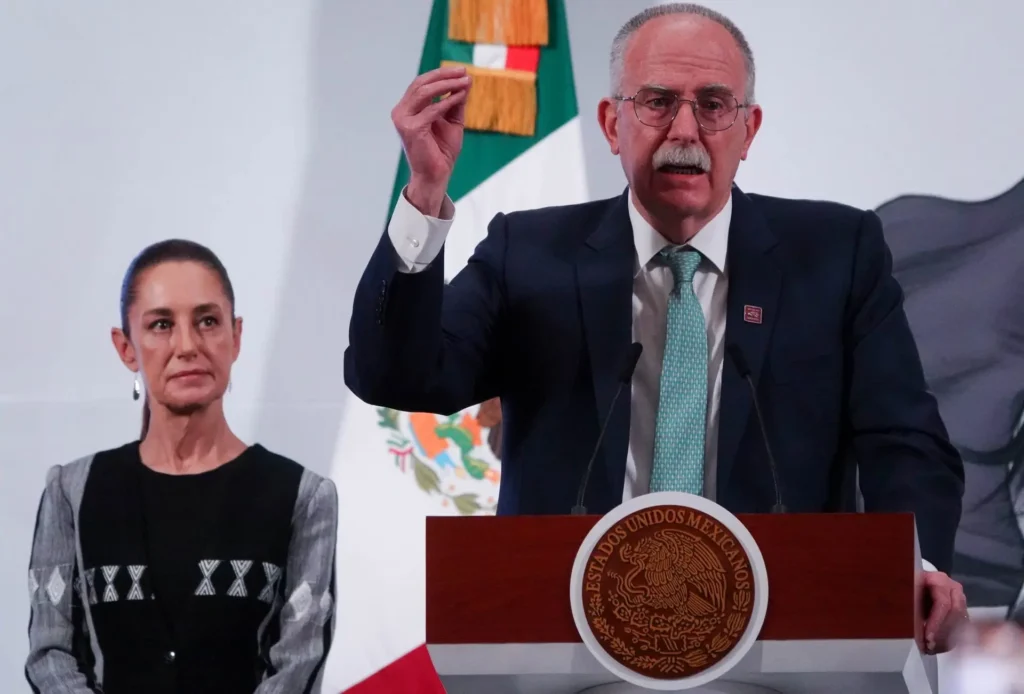
Minister of Agriculture and Rural Development Julio Berdegué Sacristán reported on the strengthening of the national strategy to combat the New World Screwworm (NWS) in conjunction with the U.S. government with the goal of reopening the border to cattle exports between the two countries in 15 days.
“Mexico is in permanent dialogue with its U.S. counterparts, doing 100 percent of what was agreed upon,” Minister of Agriculture Julio Berdegué Sacristán pointed out in the morning presidential press conference, known as the mañanera.
The Minister indicated that Mexico has acted responsibly even before NWS entered the country, by establishing preventive measures since 2023. He highlighted that, following the reappearance of this pest in that same year in Panama, the insect traveled more than 3,700 kilometers to reach Mexico’s southern border. Since then, the Ministry of Agriculture has maintained close coordination with U.S. health authorities to deal with the problem.
Berdegué also explained that in June 2023, the Mexican government of then President Andrés Manuel López Obrador ordered the reinforcement of inspection measures at airports, customs stations, and the country’s southern border. In May 2024, it activated a training campaign for veterinarians in 4,400 clinics and pharmaceutical points of sale.

Two months later, in July 2024, the National Emergency Device for Animal Health (Dinesa) was activated, as a preventive measure, to mobilize all government resources.
The Minister of Agriculture noted that in October 2024, Verification and Inspection Points (PVIF) were installed in Catazajá, La Trinitaria, and Huixtla, Chiapas, for the control and inspection of cattle. As a result, the first case of NWS was detected in November of the same year.
To date, Senasica has inspected 9,741 shipments of cattle, totaling 610,660 animals, in order to prevent the movement of infested cattle to central and northern Mexico.
Berdegué explained that for the purpose of inhibiting the reproduction of the pest, from November 2024 to date, almost one billion sterile flies have been dispersed. They were shipped from the only sterile fly production plant in the hemisphere, located in Panama and operated by the U.S. Department of Agriculture (USDA).
He reported that, as part of the joint strategy with the USDA, it was agreed to reinforce controls over the movement of cattle and to carry out epidemiological tracking from the Gulf of Mexico to the Pacific, from Veracruz to Oaxaca and southern Guerrero. In addition, all the ranches in the area will be visited to inspect the animals and detect cases of infection.
The Minister reiterated the call to USDA-APHIS to open a sterile fly production plant in Mexico, specifically in the state of Chiapas, which, he said, is a strategic measure that will strengthen the regional response to this health threat.
Since July 2024, a broad informational and training campaign has been implemented, through which, to date, Senasica specialists have presented 1,522 talks throughout the country to more than 60,000 producers, as well as 99 online courses in which more than 9,000 doctors and veterinarians have participated. During the visits, more than 120,000 sachets of powdered medicine, essential for healing wounds in cattle, and 150,000 kits for collecting larvae samples, were delivered.
In addition, intensive epidemiological monitoring is being carried out. This involves visits to ranches located in at-risk areas by technical personnel from the Ministry of Agriculture and livestock associations to inspect cattle and identify possible cases of infections. In addition, notifications are attended to in less than 24 hours.
When a case is detected in a containment zone, Senasica conducts epidemiological tracking within a 20-kilometer radius. If the case occurs outside the risk area, the search is extended to a radius of 40 kilometers.
The Minister reiterated the Mexican Government’s commitment to the national productive sector. He highlighted the meetings held yesterday with the governors and other authorities of the states of Campeche, Chiapas, Chihuahua, Coahuila, Durango, Nuevo León, Oaxaca, Quintana Roo, Sonora, Tabasco, Tamaulipas, Veracruz and Yucatán, as well as with leaders of the national livestock sector.
In these meetings, agreements were reached to reinforce the campaign against NWS, based on a permanent dialogue and collaboration with state governments and Mexico’s cattle producers.
Related: Mexico to Inaugurate Wastewater Treatment Plant in Tijuana, Baja California
Mexican Press Agency is part of ALMA, which is dedicated to news and information about Mexico and Mexicans in the United States and is a fiscally sponsored project of Social Focus, a 501(c)(3) nonprofit organization based in Redwood City, California.